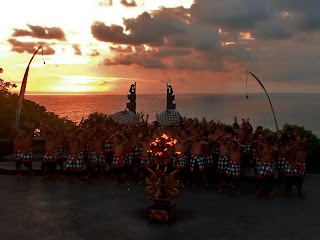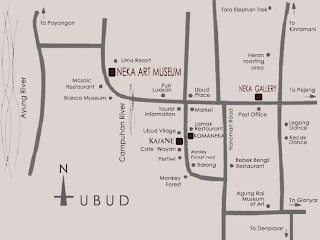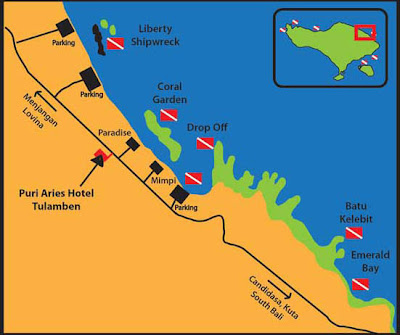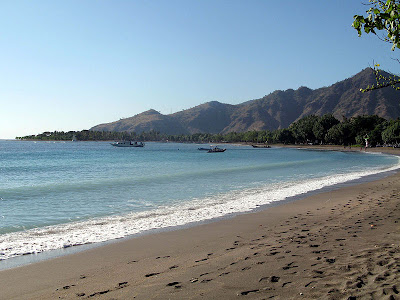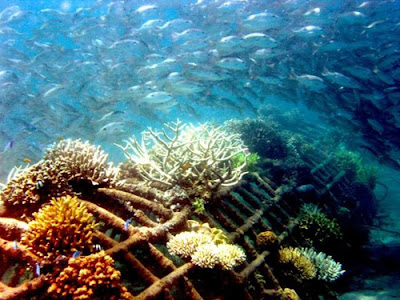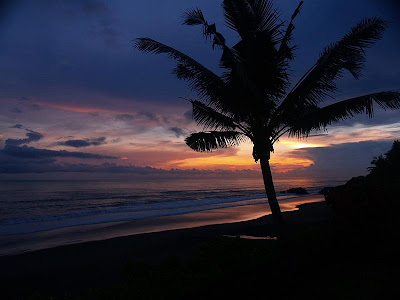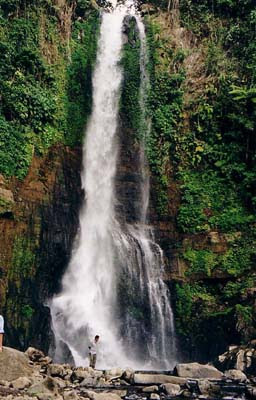West Bali National Park (Taman Nasional Bali Barat in Bahasa
Indonesia) is the most north-westerly point of Bali. It includes the
whole of the Prapat Agung Peninsula, and large swathes of land around
the towns of Gilimanuk, Cekik and Banyuwedang. The
official area inside the park boundaries is 190 square kilometres, with a
further 580 square kilometres of protected reserve in the highlands to
the east. In total this accounts for some ten percent of Bali's total
land area.
The habitat is very varied with rainforest, dry savanna, acacia scrub
and lowland forests, as well as more montane forests in the higher
centre. There are also some pockets of dense mangrove forest.
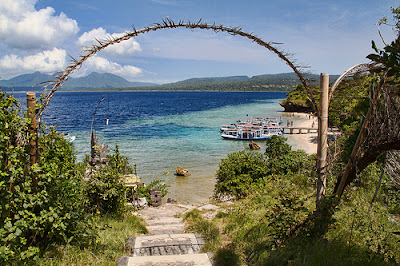 |
| West Bali National Park |
In the north of the park there is an obvious north jutting
peninsula called Prapat Agung. Around this peninsula there are long
stretches of protected beach and offshore coral reef as well, as a small
offshore island called Menjangan. The latter is a very popular diving
destination.
There are several long extinct volcanoes in the protected reserve
area to the east, with Mount Patas (1,412 metres) and Mount Merbuk
(1,388 metres) being the highest points. These peaks are dominant visual
landscape features from within every area of the park.
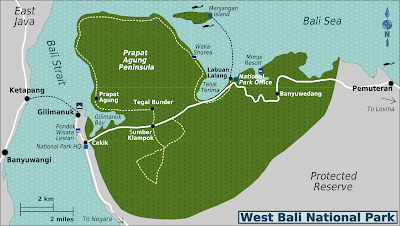 |
| West Bali National Park Map |
One hundred and sixty species of bird have been recorded in the park,
including the near extinct Bali Starling, Bali's only endemic
vertebrate species, and a key reason why this national park was created
in the first place. By 2001, as few as six individuals were thought to
survive in the wild, all of them in this park. Since then captive
breeding and re-introduction efforts have continued apace, but poaching
pressures are a large problem. With that in mind, a seconf
re-introduction programme was started in remote regions of Nusa Penida in 2004. Keen birdwatchers can find a checklist of likely species and their status here.
Mammals found inside the park include Banteng, a species of wild
cattle from which the familiar Bali cows are descended. Java Rusa and
Indian Muntjac deer are quite widespread, and Menjangan Island is in
fact named after these (Menjangan means deer in Bahasa Indonesia). Wild
Boar and Leopard Cats are both quite common but seldom encoutered.
A Bali Tiger (a full sub-species of Tiger) was shot here in 1937,
and despite rumours to the contrary, that is the last ever confirmed
sighting of an animal considered extinct since that moment.
 |
| Jalak Bali |















